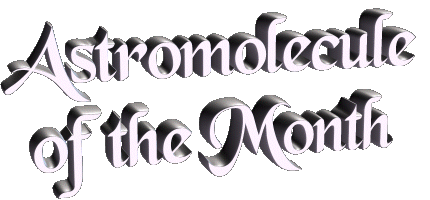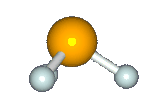|
The detection of phosphine, PH3, was reported
in the atmospheres of
Jupiter and
Saturn in
1976 and 1980, respectively. The identifications were made using infrared spectra collected with the
McMath Solar Telescope at Kitt Peak and by the
Kuiper Airborne Observatory. Subsequent IR studies,
such as the work by
Kunde et al. based upon
Voyager 1
IRIS data, confirmed
the detection for Jupiter, as did the microwave work by
Lellouch et al.
However, phospine fell below the detection limit in ultraviolet spectra taken with the
HST Faint Object Spectrograph by
Edgington et al..
Confirming results for Saturn include work by
de Graauw et al. with the
Infrared Space Telescope.
Phosphine (phosphorous hydride) is the second-row
analog of ammonia, though it is a
much weaker base. It is used in
semiconductor manufacture and as a
food fumigant.
|


